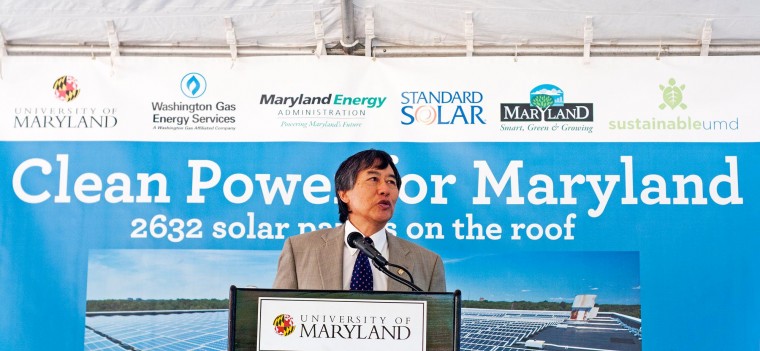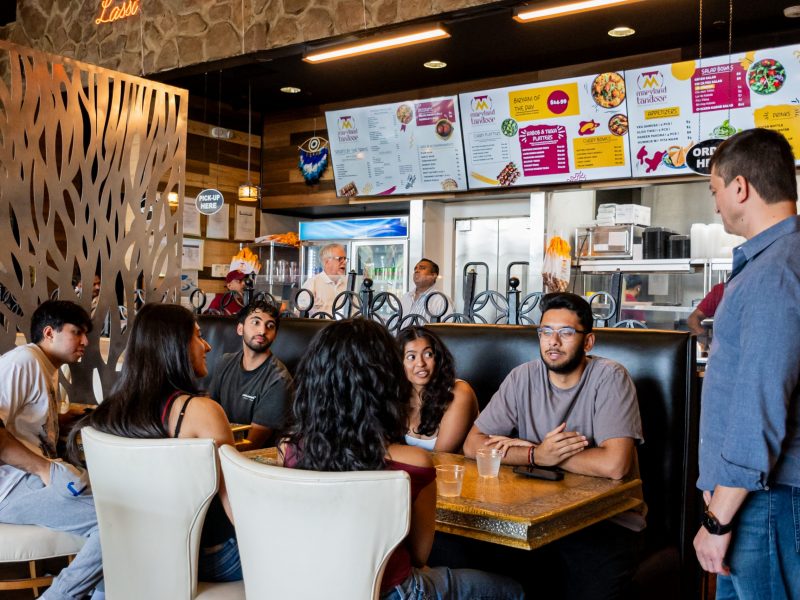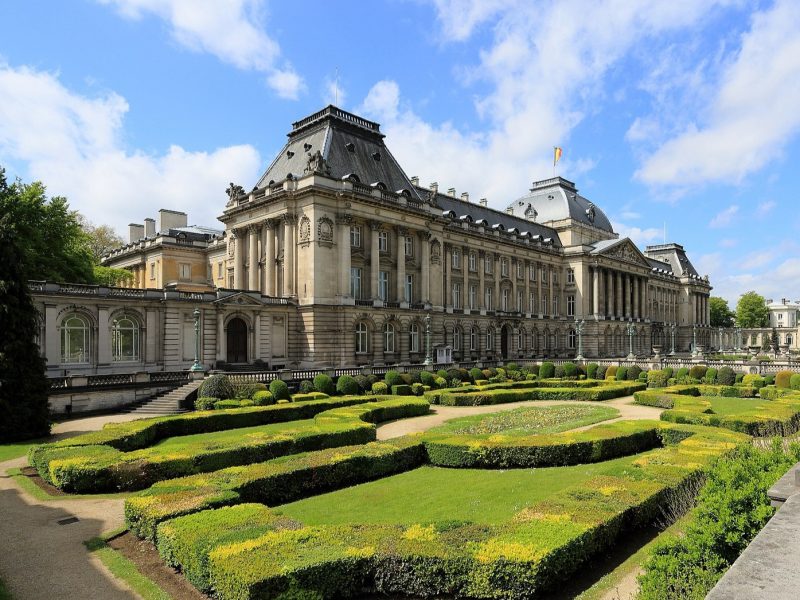
University President Wallace Loh spoke on the roof of the Severn Building, located on Greenbelt Road, where officials installed 2,600 solar panels over the summer.
This semester, the university’s commitment to sustainability kicked off atop a roof.
The Severn Building on Greenbelt Road had 2,600 solar panels installed during the summer, and officials said it — along with the debut of Oakland Hall — will pave the way in the university’s continuous quest to become one of the nation’s greenest campuses.
“We are committed at the University of Maryland to a clean energy future,” university President Wallace Loh said at an event yesterday. “We have an impact on generations unseen.”
In the afternoon sunshine, dozens of university officials toured the Severn Building’s rooftop to view the solar panels that are capable of producing 631 kilowatt-hours of electricity.
Officials said this new installation — which received $630,000 in funding from the Maryland Energy Administration — will help the university reach its overarching goal of achieving net carbon neutrality by 2050, the main mission highlighted in the university’s Climate Action Plan.
The solar array — which is one of the largest in the area — would help to both cut the university’s carbon footprint and set a positive example for future generations, according to Loh.
“We are committed at the University of Maryland to a clean energy future,” he said. “We have an impact on generations unseen.”
Office of Sustainability Manager Mark Stewart said one of the most important features of the solar array would be generating renewable energy credits, a type of energy currency the university can use to help offset other energy consumed on campus.
The array, which is owned by Washington Gas Energy Services, will produce RECs that the university and other companies can buy from WGES for the first five years, Stewart said. After that time span, the university will own all the RECs, which will help the campus rely less on nonrenewable forms of energy.
“This is adding renewable energy to our region,” Stewart said. “It’s just a symbol of all the renewable energy we’re producing off-site.”
Student Sustainability Committee member Matthew Popkin said the solar panels help students visualize the steps the university is taking toward using more renewable energy.
“It’s cutting edge and bringing the latest technology to generate power for the campus,” Popkin said. “Though the panels aren’t at the university, they’re close enough for students to come take a look.”
In addition to the panels, the newest high-rise dorm, Oakland Hall, features state-of-the-art sustainable features — such as energy-efficient light fixtures and covered bicycle parking that the university hopes will land the building a LEED gold certification ranking.
Oakland Hall could help set the standard for future green buildings on the campus, said Office of Sustainability communications coordinator Fran Avendaño.
“The LEED buildings reinforce the idea that when we continue to build new structures, we want to make sure they’re sustainable,” she said.
Both green buildings could help the university as it continues to be recognized as one of the nation’s most green campuses — the university was recently named on the Sierra Club’s list of America’s “top 20 coolest schools for sustainability practices.”
“It’s very distinguishing to see the university on the same level as these other campuses,” Avendaño said. “We hope this is a motivating factor [for the campus community].”
Stewart said he hopes the university’s national recognition will help students become more involved in campuswide sustainability efforts.
“It’s nice to be recognized, but the biggest benefit is it’s become public knowledge the university is a leader in this,” Stewart said. “We’re dealing with a social change movement, and we need to motivate the masses.”
saravia at umdbk dot com



